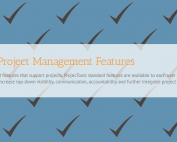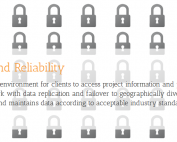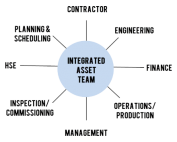Project Accountability Management
Accountability is a super important part of engineering and construction projects. When engineers, suppliers, managers, and clients are late in returning something – you need to know.
Its not just for accountability’s sake either – nobody wants to be in charge of chasing down team members for the verbal caning. More than that, missed deadlines can affect cashflows, invite penalties, and upset clients. That last one is a zinger. When clients become upset with a company, they tend to take their business elsewhere or at least make you jump through hoops.
Since this is the case you ought to have some project accountability management measures in place. Join the demo to see how to make it happen easily and affordably.
Project Accountability Management
Before we get started, I just want to have everybody to sit back and have a zen moment with me.
Close your eyes and think about a world where all the tasks get turned in on time, documents are never late, revisions are always on track, and, you might be thinking to yourself, this is unrealistic, and it may be, but in this world, think ability to track and see what documents are late, what revisions are late, what’s not on track, very easily. Just by producing a simple report, so you know how to go around and find, and maybe prod them along a little bit. Makes me think of a story I heard a couple days ago from a prospect. They’re a big engineering company, very prominent in oil and gas and so forth. They were saying they’re looking for a program that can, give them an engineer’s to-do list and then if, the engineers, the people that are working, aren’t doing their work, they can go around and prod them along.
That’s the main selling point. That’s what they want in a software. I’m here today to talk about accountability management and how you can keep your teams on task and make sure that you have some visibility in what people are doing and/or not doing. Let’s get started.
The main problem when we talk about accountability is confusion. People don’t know what’s going on. There’s due dates that people write it down on their calendar wrong, there’s assignments, they’re like, hey, you asked me to do that, it was in a meeting, and I’m not sure that you told me to do that. I thought you told the group to do that. They don’t know the things are assigned to them, or they think it’s assigned to a group or they don’t know the sequence, they think that they’re supposed to have something handed to them, a package that’s handed to them, to work on. When in reality, they’re supposed to get it, so that’s a work flow thing. That’s all just confusion due to ambiguity. People don’t know. Ignorance, ambiguity, whatever you want to call it, people don’t know what they’re supposed to be doing so it doesn’t get done.
This is a result of a lot of times meetings where you don’t have agendas or notes, or parking lots, or minutes, that get circulated afterwards or specified tasks. A lot of companies that manage, we work a lot with engineering companies so focus at manage drawings and specs on paper, like physical paper. They have problems because there’s really no way to track what’s going on there other then knocking on somebody’s office door and asking to see the piece of paper or going into a filing cabinet and hoping that what you’re looking for is there. That’s a problem. That paper way of doing things causes problems.
Another problem is silos. Teams doing their own thing. You want a cohesive work flow where all the ambiguity is gone, all the confusion’s gone, everything’s electronic, and flows from one person to the next so they can basically assembly line and put the work together in a timely manner with managers having the ability to gain some visibility into the process. If that doesn’t happen. That produces problems.
Another problem is responsibility without authority, so if you have project managers that don’t have the authority to actually move things along, they end being a mosquito pestering people to get work done, rather than a hornet that goes in and really spurs people along with authority.
All right, and there’s also lack of visibility, I kind of touched on this earlier, but if management or executives or team leads, or even other team members, can’t see into a process and where it’s at and where it’s going, and if it’s falling behind then there’s really, there’s no accountability. Visibility is the first step in accountability.
The other problem is manual reporting. When people have to go and, like I said, knock on office doors and go look at physical pieces of paper or a spreadsheet on somebody else’s screen, their formulated report, that’s manual. That takes way too long and often times you don’t get the whole story when you’re formulating your reports and they’re gonna be inconsistent and it leads to a lot of problems, but that’s not an accountable way of doing things. You want a system that’s going to collect all of the data, all of the progress, all of the status, and then report it out in basically objective terms that are consistent every time and that’s gonna go a long way. If people know that you have that capability, they’re gonna hold themselves accountable, they’re gonna hold their teammates accountable, and it gives the managers and executives the ability to hold everybody accountable.
All right, so the consequences of all of those problems we’re talking about, things get turned in late. You’re not maximizing your billable hours. If you’re a subcontractor, or contractor. The quality slips. The timeline slips, so you could end up with penalties. You could have to do a bunch of re-work because people are doing things out of sequence. You lose credibility with your team, with your management, with your executives, because you’re seen as being an unaccountable individual, an unaccountable group, and unaccountable division, an unaccountable discipline, whatever it is you lose credibility.
Finally, the worst thing you can do is lose credibility with your clients because that leads to losing repeat business. If clients don’t believe in you, if they don’t believe in every aspect of your team and your ability to manage your team and hold them accountable and deliver, you run a very high risk of losing repeat business and let me tell you, repeat business is the easiest business to find, so losing it is a real killer.
Moving away from the doom and gloom a little bit, let’s take a look at what the solution is. First, you have to define your process and your workflow and make it visible to everybody, so if everybody can see what the workflow is, what the process is, they can follow it. The second portion is having an application that manages that workflow and provides visibility and accountability, so what should you look for in a system that’s gonna manage this?
Number one, it needs to be accessible. What do you have teams all in one office, teams on the other side of the city, teams on the other side of the state, or region, country, or continent, or even on the other side of the ocean. We have a lot of clients that work here, out of Houston and they have clients in Aberdeen, and they have inspectors in Korea, they have a fab yard in Indonesia and project manager and office in Singapore, and all these teams have to work together and contribute to that workflow and they can’t do that if the central place where they go and find things and log things isn’t accessible, so things need to be accessible. We recommend Cloud applications for that. We’re big believers that’s all we offer.
Number two, time stamps. This kind of goes with tasks. Time stamps work really well if you can tell whose doing what particular thing in an application. I’m gonna show you some time stamps and some history logs for document changes and equipment management, also for some tasks. If you know when somebody was working on something and when they turned it in or when it went out to them, you have some very key time based data points to hold people accountable, or teams accountable, or even your clients accountable. Without time stamps and tasks and the history logs, you’re kind of up a creek without a paddle.
I mentioned tasks. Tasks need to be person specific and the kind of tasks I’m talking about here is like internal squad checks for engineering documents or specs or vendor documents, supplier documents, or requisitions. If somebody needs to have approval. All the tasks should flow to a specific person rather than a team or a group of people, because if it’s assigned to multiple people, it’s really assigned to no one, and there’s no accountability there.
All right, so the fourth thing I mentioned, the fourth thing I’m gonna mention here is workflows. I know I’ve hammered this a few times, if there’s no workflow, it its not defined and people don’t know what it is and there’s no system to enforce it, the workflow is out of control. Your whole process, probably your business is out of control. It’s operating because you probably have some great people that want to do the right thing and want to help the company succeed and know what they need to do just because they’re smart people, but not everybody’s like that. You can grow a business, explode a business if you don’t have defined workflows where people know exactly what they need to do and it’s documented and they can reference it and you can track it. Workflows is super key here. Everything we’ve been working up to is basically visibility.
Number five is really the accountability portion of it. Being able to report, when you report on progress and status, and late action and report on your look ahead reports, you can really see whose performing, what groups are performing and what groups are under-performing or not performing at all, so you’d know who to go talk to and make sure that they’re not sleeping at their office, or doing things that aren’t contributing.
Today I’m actually going to get into our application, I want to prove to you guys that ProjecTools can manage your workflows, it can help you report on progress, status and late action, even look ahead and I’m going to show you how ProjecTools can help you maintain accountability and visibility and that is built into the application so things get done.
All right, so here’s ProjecTools application. I’ve logged in. You just go to the website, and go to login page and put in your credentials and you show up here at this page. You can see I have a lot of things going on here. The main thing I want to talk about today is the incomplete task manager. This is where everybody should go, this is like that engineer’s to-do list or the manager’s to-do list that I was talking about. Let’s take a look at one particular task here. This ETR review. An ETR for us is engineering technical review, engineering technical routing, rather. This is for review so let’s open it up here.
We can see that this thing, it’s assigned to me in particular, Eric Morey. Here I am down here. I’m on the reviewer list. I actually have a due date for this thing. It was due on the second of December, 2014 so obviously I’m a little bit behind and everybody else here is behind, and that’s a problem. I should be reviewing these documents. In fact, I should have done them long, long time ago. In fact, in 2014. Since I have this outstanding task, I don’t have a whole lot of other ones so we’re using this really old one as an example. Let’s go take a look in ProjecTools application and see if we can produce a report that will show that I’m late.
Let’s go to document control, we’ll go to reports, and we’ll go to routing return. Let see if Eric Morey shows up. Okay, so we ran a late action report for routings which is squad checks. We can see that I’m missing a few here, some are very late and this one in particular that we’re looking at, 0074, it’s pending Eric Morey, so Ned is a great example of late action report where somebody is dropping the ball and you can go back and hold their feet to the fire or give them a canning, whatever your vernacular is to hold people accountable.
I want to draw your attention down here, we have a lot of late action reports. We have approvals, transmittal returns, so if you send something to the client, which is transmittal, for us in our application you can see if your client’s acknowledged them or approved them. That’s a great way, if you project slips, or you’re not meeting a deadline and it’s your clients fault, which let’s face it, happens, from time to time, it’s kind of tough to just go and say, hey you’re late. They might get a little upset about that, but if you walk in with a piece of paper and then like, okay well we’re making good progress the only thing we’re waiting for is these things from you, and you produce a report that shows them, hey you guys are late, you’re dropping the ball, it’s going to help you guys out significantly. Rather than just winging it and being accusatory, so having some data to back it up is good.
Okay, and we can also see a bunch of other status and progress reports here for documents and it’s great. These reports are beautiful so if a document revision is late and hasn’t revved up since past the due date, it’ll actually show up red, so it’s really easy to track down the documents that are late and then go find whose responsible and prod them along or figure out what happened. All right, so back to this homepage area which is specific to each user, I want to mention that I have a bunch of different tasks here so I have another routing here, I have a transmittal, some notifications, some HSE action, all of these are tasks that have been sent to me personally and they’re all trackable, so I need to contribute to this HSE study, and if I don’t by the specified date, which is the 14th of March, 2015 somebody’s going to be able to run a report and see that I’m dropping the ball here. Okay, so that’s all I wanted to show you from the homepage.
Let’s go back to our application portal. Now, I showed you this earlier but I didn’t mention that this is really like the nuts and bolts of where your document controllers and people who work in ProjecTools application everyday are going to hang out. The other side is more of a front end, the homepage was more a front end that engineering or casual users, people that participate in reviews and approvals, and just accessing documents are going to hang out. Let’s take a look at the register here and let’s filter for a document here.
Okay, so here’s just the document placeholder here and your document register, and there’s all kinds of things you can add to the document. Tons of metadata that really help the document controllers and the whole project out, but for accountability sake I want to go in here and take a look at the history. I want to see what’s happened to a particular document so I can see that Mark Isfeld originated this document and took it through Rev A and then the manager of document management, DM manager here, picked it up in March, and at the end of March, and progressed it through REV B.
This is a spectacular view here, I can see the major and minor things that have been done to this particular document. Who did them, and when they did them, and what stage the document was at when these actions were performed. It’s a great dive into each document that you have on an individual basis so if something goes really wrong you can always go back and figure out how a particular document went haywire.
All right, so last thing I’m going to show you here is ProjecTools equipment manager. This is kind of along the same lines. Let’s take a look at this tag, it’s just a bunch of information about a piece of tagged equipment that we have and very similarly, I’m going to take you this history tab, so this compiles all the history for this particular tag or piece of equipment. We can see that that was originated in 2008 and a lot of things have happened to it. Over the years up until now. This is incredibly important when you’re working in oil and gas, EPC, construction and engineering projects.
When you have a central engineering data store you basically excuse and eliminate all the headaches that are associated with managing this stuff on spreadsheets. You always have a latest rev of your equipment register. Excuse me, and you can make some changes and do some imports and some batch updates to your tag list, but it’s going to be tracked here in this application, this history tab so you can always see whose doing what to your equipment, and whose changing critical engineering data for your tags, so if something doesn’t look right down the road you know exactly who you can go to and figure out, resolve the problem.
All right, so that’s just a very quick look into ProjecTools, accountability management, and just some things that we offer to keep your data all up to date and to keep your teams working together and the end result is, a project that’s a higher quality than it was before, and teams that are more cohesive, less money spent on overhead, more time spent on billable hours, especially if you’re a contractor and let’s be honest here, you’re going to have happier clients and happier executives and managers when you have a system that’s going to make things visible and make information share correctly and make an accountable workplace.
ProjecTools Product Information
ProjecTools Client Spotlight
ProjecTools Client Spotlight "I don't see how companies can manage projects like [...]
Standard Project Management Features
ProjecTools subscriptions provide valuable standard features that support projects. ProjecTools standard features are available to each user to complement core application functions and business processes. Utilize the modules below to increase top-down visibility, communication, accountability
Security and Reliability
Users need a secure, reliable environment to access project information and perform work. All applications and client data resides in a private cloud network with data replication and failover to geographically diverse datacenter equipment. ProjecTools provides 99.5% Network Availability
Construction Project Management Services
ProjecTeams is proven for flexible on-site or remote project deployments. Each ProjecTeam specialist has deep work history with a career of improving project execution, information management processes, with tools that make projects efficient, timely, and profitable.
ProjecTools Resources
Spreadsheets and Email as Project Management Tools
Projects have too many moving parts and too many players to be trusting critical data to spreadsheets and emails. You need a spreadsheet reduction strategy.
Project Management Assessment
Project Management Assessment Assess your project management practices against the best project execution teams in the Capital Construction, [...]
Document Management Software ROI
Document management is massively important for engineering and construction projects. Take the approach and use the tools that add the most value.
Aligning Document Control and Cost Control
Align Document Control with Cost Control and create seamless progress and earned value reports to stay on budget and improve cash flows.
ProjecTools Videos, Demos, and Webinars
Optimizing Review and Approval Processes for Engineering
Let’s talk about review and approvals, and closed-loop systems, and how to execute the review and approval processes for engineering and commercial...
The Keys to Successful Document Management
Let's talk specifically about document management software, and the key factors for clean and organized documentation, accessibility, finding a system...
Document Management Software ROI
Document management is massively important for engineering and construction projects. Take the approach and use the tools that add the most value.
Document Distribution and Access for EPC and Construction
Global projects have global teams that need to be in the loop. Cloud technology takes the pain out of giving teams on demand access to project data.






